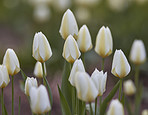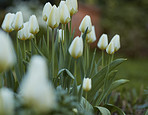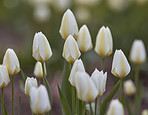Stock Photo - Common snowdrop - Galanthus nivalis
Tulips, natural garden and peace in botany, eco friendly environment and grass for growth. Forest, flowers blooming and public park for horticulture plants, sustainable ecosystem and woods for flora - Stock Photo
Stock photo ID: 1819391
How do you plan to use this image?
Choose Size and Download



































